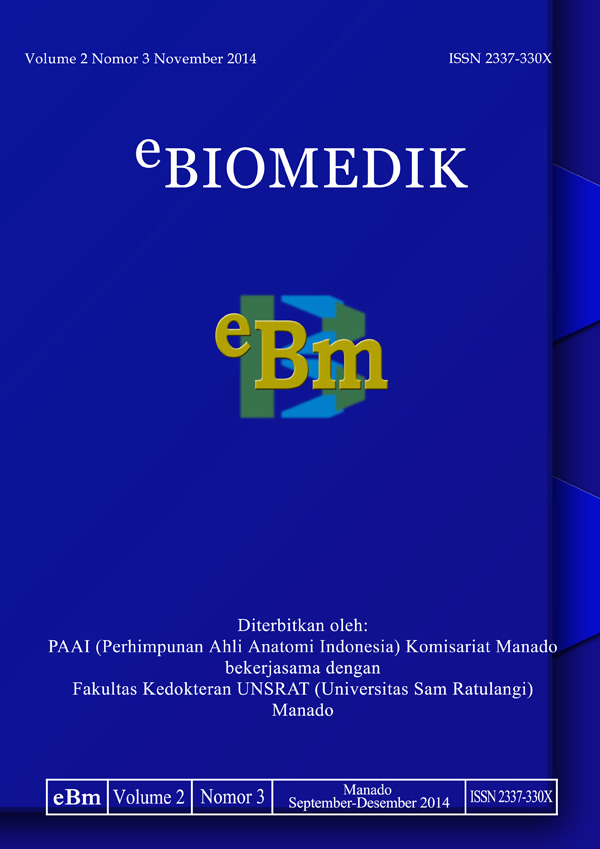GAMBARAN BAKTERI RESISTENSI HgCl2 DAN FENIL MERKURI YANG DIAMBIL DARI FESES, URIN, DAN KARANG GIGI PADA INDIVIDU YANG TINGGAL DI DAERAH PESISIR PANTAI DI DESA KEMA II
DOI:
https://doi.org/10.35790/ebm.v2i3.6007Abstract
Abstract: Mercury as one of the dangerous contaminants, are neurotoxins and enter into aquatic ecosystems through atmospheric deposition or derived from industrial waste externalization. Methods: This research using descriptive and exploratory method. After getting the sample (feces, urine, tartar), the study followed by laboratory tests. Result: It was found that bacterias resistant to HgCl2: streptococcus sp, E. coli, and clostridium sp, while the bacterias that resistant to phenyl mercury: bacillus sp and sp aeroccus.
Keywords: Bacteria Resistance, HgCl2, Phenyl Mercury, Feces, Urine, Tartar, Coastal Marine.
Â
Abstrak: Merkuri sebagai salah satu zat pencemar yang berbahaya, bersifat neurotoksin dan masuk ke dalam ekosistem akuatik melalui deposisi atmosferik, maupun berasal dari eksternalisasi limbah industry. Metode: Penelitian ini bersifat deskriptif dan bersifat eksploratif. Kemudian setelah mendapatkan sampel (feses, urin, karang gigi), penelitian dilanjutkan dengan pemeriksaan lab. Hasil: Didapatkan bakteri yang resisten terhadap HgCl2 : streptococcus sp, E.Coli, dan clostridium sp. Sedangkan bakteri yang resisten terhadap fenil merkuri: bacillus sp dan aeroccus sp.
Kata kunci: Bakteri Resistensi, HgCL2, Fenil Merkuri, Feses, Urin, Karang Gigi, Daerah Pesisir Pantai.





